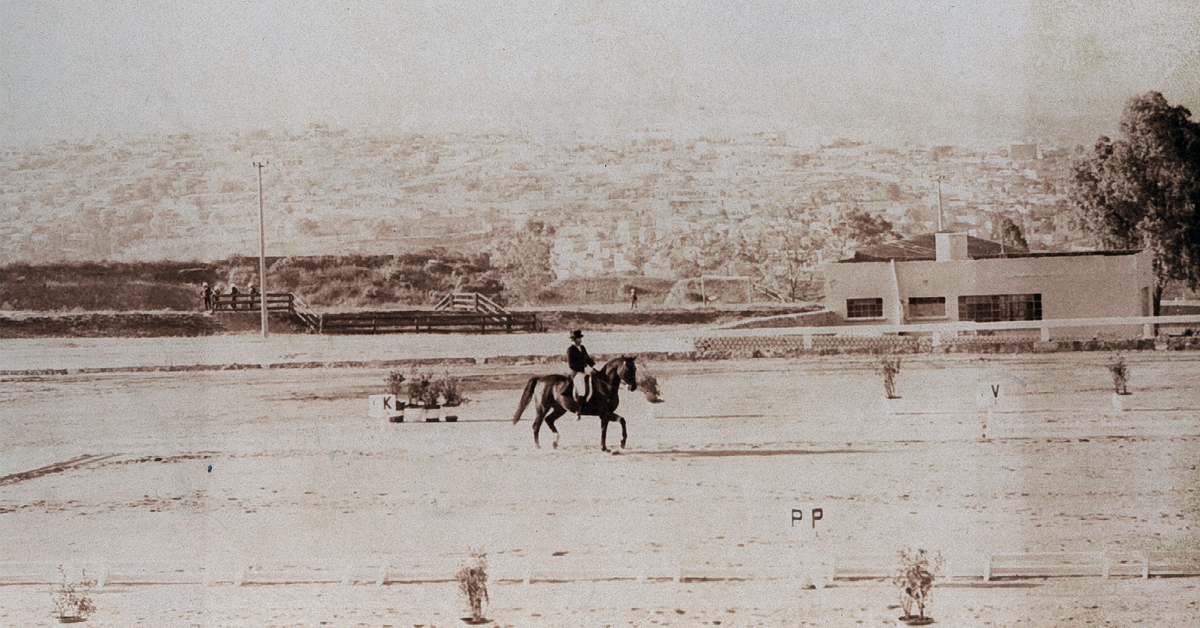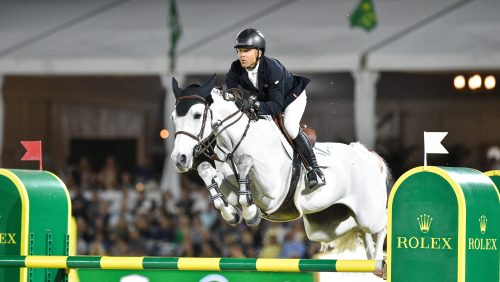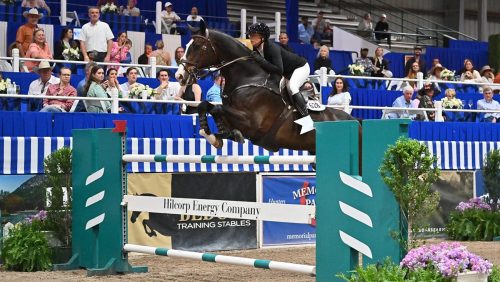Though the U.S. took home the team gold medal as well as individual silver and bronze, not all of the competitors in the 1975 Pan American Games dressage had such smooth sailing. Here’s the Chronicle’s report on that year’s competition. One of the notable details is that it was the international debut of Keen, the famous Thoroughbred who went on to represent the United States in the 1976 and 1984 Olympic Games.
There is currently much enthusiasm for Grand Prix Dressage in Brazil where they have an excellent coach, Orlando Facada. At the beginning of this season no less than eight Brazilian horses were ready for competition at the Grand Prix level. Three then tested positive for V.E.E. and were destroyed by the government; in an airplane accident two more were killed and a third, Nuage, sustained a broken sesamoid. This left two sound horses out of eight. The broken sesamoid mended with surgery, the Brazilians at the last minute decided to enter their 2½ horses as a team. There was also a single entry from El Salvadore, placed 13th out of 13—enough said!

The 1975 Pan American Games took place with a backdrop of Mexico City.
Hilda Gurney owns and rides Keen, an American-bred 9-year-old Thoroughbred chestnut gelding, 17.1, a horse with great athletic ability, like most Thoroughbreds naturally balanced on his forehand, a tendency which rider and coach have very largely eliminated.
A couple of years ago when Dorothy Morkis’ previous horse broke its leg, she wrote a dressage friend abroad to be on the lookout for a substitute. A trans-Atlantic telephone call told her about a successful competitor at the Prix. St. Georges level, a the grey Hanoverian gelding Monaco, now 14, who could not be used for Grand Prix competition because he would no longer execute the changes of lead every stride.
Dorothy bought the horse, shipped him to Raynham, Massachusetts, and took him for long hacks through the countryside, asking him for “onesies” only at the end of the ride on approaching the stable. The resulting willing response, plus Ljundquist’s coaching, enabled the pair to produce their first piaffes and passages last May, since when they have ridden the Grand Prix Test only twice, at the Gladstone Selection Trials and at [a prepatory competition at] Bromont.
It speaks well for our Dressage Judges that the individual competition results at Bromont and Mexico were so comparable. Leaving out the foreign competitors at Bromont, the first five placings at both events were the same—Jungherr, Leopardi, Monaco, Keen and Equipage. In the Bromont Kuer, the placings were also the same except that Monaco did not compete.
ADVERTISEMENT
The Grand Prix scores are also interesting—Christilot Boylen and Jungherr had virtually the same marks—1642 at Bromont, 1645 at Mexico. The next three, all U.S. competitors, very considerably improved their scores from September 6 to October 19, however, John Winnett and Leopardi going from 1572 to 1638, Dorothy Morkis on Monaco from 1549 to 1628, Hilda Gurney on Keen from 1530 to 1560.
Equipage failed to improve, but had different riders—Carol Grant at Bromont with 1500, Barbara Stracey with 1465. This improvement in the U.S. entries—Leopardi 66 points, Monaco 78 points, Keen 23 points—is most certainly a tribute to the influence of the U.S. Coach, Col. Ljundquist.
There were inevitable remarks about nationalistic judging—Jacobsen of Canada put the Canadians 1, 2, 3 in the Team competition 1, 2, 4 in the Individual while Thackeray (U.S.) put the American riders, 1, 2, 3 in both competitions.
In the Individual, four judges put Boylen first, but Thackeray sitting at C, was the only judge in a position to see, accurately, whether a competitor was absolutely straight and regular on the center line. Jacobsen gave Boylen 307, 28 points better than his second horse (Stracey, 279).
Was she really that much better? The other three judges who placed her first had spreads between their first and second horses respectively of 7 (Koepple), 5 (Herrara) and 1 (Pellegrini).
All such talk is rather pointless, however, since there was general agreement that the individual Medals went to those who deserved them—Boylen the best at 1355, Gurney with the best test of her career at 1306, Morkis, not as good as the previous day, but still with outstanding pirouettes and passages, good enough to be third (1260).
Make sure to follow the Chronicle to find out what happens in Toronto at this year’s Pan American Games. We’ll have reporters Lisa Slade and Lindsay Berreth on-site to bring you all the action with great photos, behind-the-scenes details and everything you need to know at www.coth.com.














